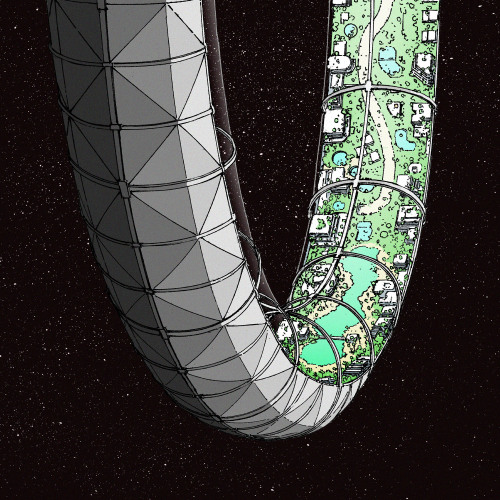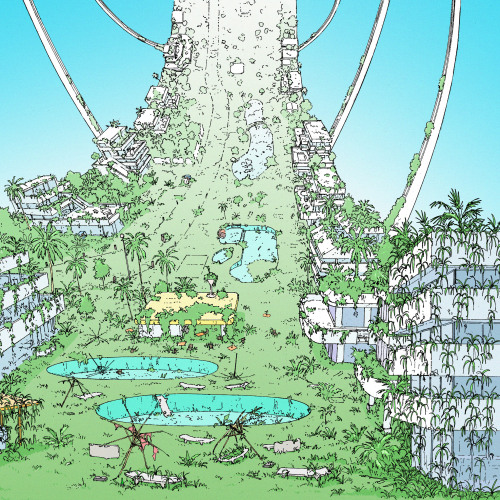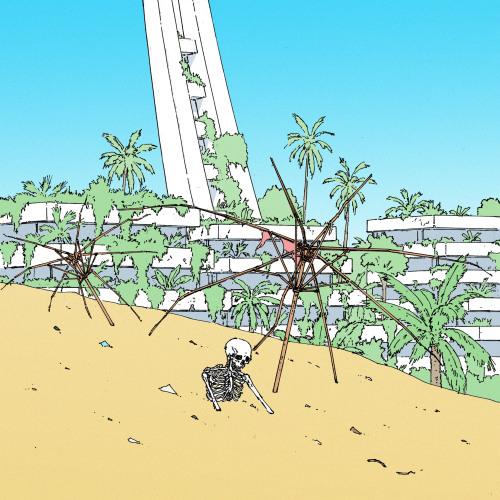qwertyu858: bigwordsandsharpedges: island3: Artwork for recent music releases by Scuba This brings u
qwertyu858:bigwordsandsharpedges:island3:Artwork for recent music releases by ScubaThis brings up a pretty good point about killing people in space.Rotating torus habitats are great for living, but they’re awful for defense. Tactically, it would be pretty easy to break in and massacre the inhabitants, even without structurally destroying the station itself. The damn thing isn’t even compartmented. Some nerve gas would spread pretty quickly, let alone a fuel-air thermobaric explosive that consumes all the oxygen. Maybe some kind of futuristic nanobot swarm? A microscopic metal bug that injects a super-poison, or just gives you a stroke? Or maybe it wouldn’t even be that complex. A couple guys could probably sabotage the atmosphere control system to replace the oxygen with nitrogen, which is colorless and odorless. It wouldn’t take very long with a relatively small volume of air like that. Inert gas asphyxiation doesn’t cause any sensation of suffocation, which is mostly caused by high CO2. It has been used as a fast and painless method of suicide, execution, and animal slaughter for years. In humans, unconsciousness can occur in as little as one minute. Before the first Space Shuttle mission in 1981, five NASA technicians were knocked out while performing a pre-launch check in a compartment that had been flushed with nitrogen to prevent fire. Two of them died. Anyway, if those methods weren’t fast enough to kill everyone on a space station, you could always just sweep through with normal room clearing tactics. It’s not like the victims have anywhere to run, and if you’re quiet, nobody on the opposite side will notice until it’s too late. Thank god I will never have to worry about this. I mean, even if humanity created this in my lifetime, no way I would be able to travel there -- source link
Tumblr Blog : island3.tumblr.com
#carlos




